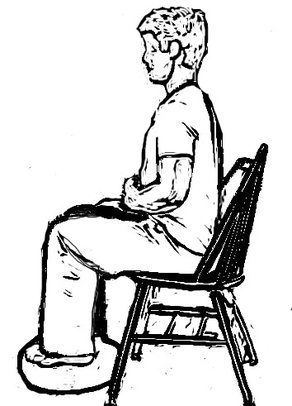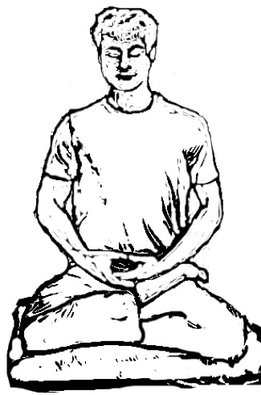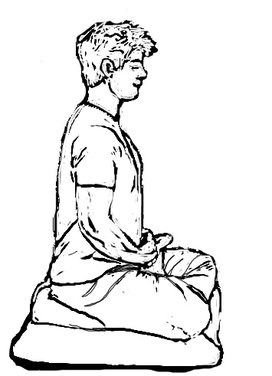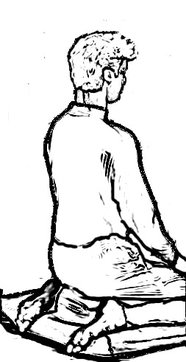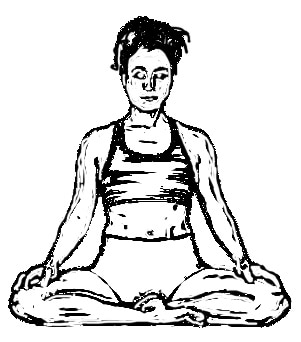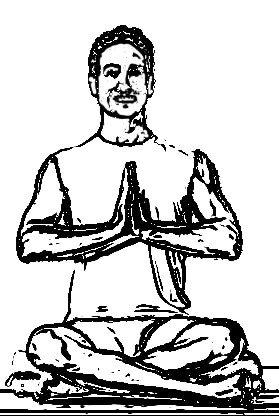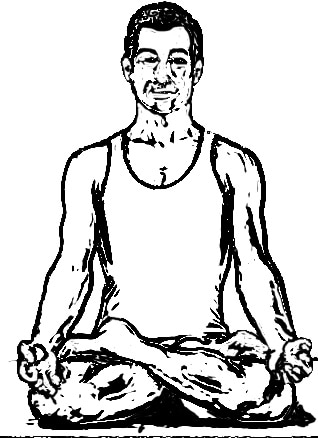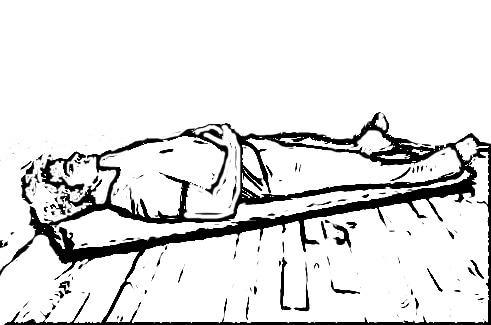Meditation Postures
A good posture will make meditation practice easier and more effective. Below are the primary meditation postures. Try to achieve the closest approximation of a pose that you can manage, while remaining relaxed, stable and alert.
Basic Sitting Pose
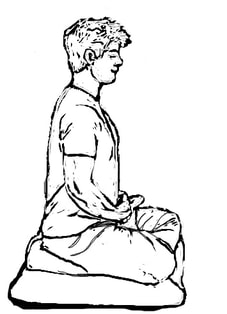
Sit with a straight back, head and neck in line with the spine, ears in line with the shoulders. The shoulders should be relaxed and lowered. The tip of the tongue is placed at the roof of the mouth, just behind the teeth. The eyes are best kept open and turned downward (about four feet in front of you). Keep the gaze soft. The hands can be placed on the thighs or placed against the abdomen, just below the navel. Place the left hand inside the right, palms facing upward and the thumbs lightly touching.
Chair PostureSit up straight, with the spine away from the back of the chair. If necessary for comfort, you can place a cushion between your spine and the chair back. The Feet should be flat on the floor. If your feet do not reach the floor, place a cushion or pillow beneath the feet to keep the knees and legs perpendicular to the body. The hands can be placed on the thighs or pressed against the abdomen, just below the navel. The Left hand placed in the right, with the palms facing upwards. The thumbs should be held up and touching each other lightly. The rest of the pose should be the same as the Basic Sitting Pose above.
|
Sitting on a Cushion (Half-Lotus)Sitting on a cushion, tuck in one of your legs. Place the left foot on the right thigh (or the right foot on the left thigh). Your knees should be making contact with the cushion. If necessary sit on a pillow or smaller cushion to lift the hips and tilt the knees downward. Alternatively, you kneel and place a cushion between the legs.. The rest of the posture should follow Basic Sitting Pose instructions.
|
Quarter LotusThis is a modified version of the Lotus Pose. Sitting on a cushion, with legs loosely crossed and both feet resting below the opposite thigh or knee. This is a very easy and comfortable position, however, it can lead to legs falling asleep after long sitting periods due to nerve compression.
|
The Lotus PoseThe Lotus pose is very stable and can be held for long periods of sitting with very little effort, however, it is an advanced pose that requires flexibility in the hips and healthy knees. Do not attempt it without some prior experience or under the guidance of a teacher. In this pose, both legs are crossed and the feet rest on top of the opposing thighs.
|
Lying DownThis is pose is beneficial for deeply relaxing meditations, such as body scan or for longer guided meditations and visualization exercises. It is also a good pose for those with back pain, fatigue or other physical issues that make sitting difficult. Lay on a mat on the floor or on a bed. The head should be flat or elevated very slightly. The feet should be spaced hip-width apart and relaxed so that they fall away from each other. The hands can rest gently on the abdomen or along the sides palms held upwards.
|
